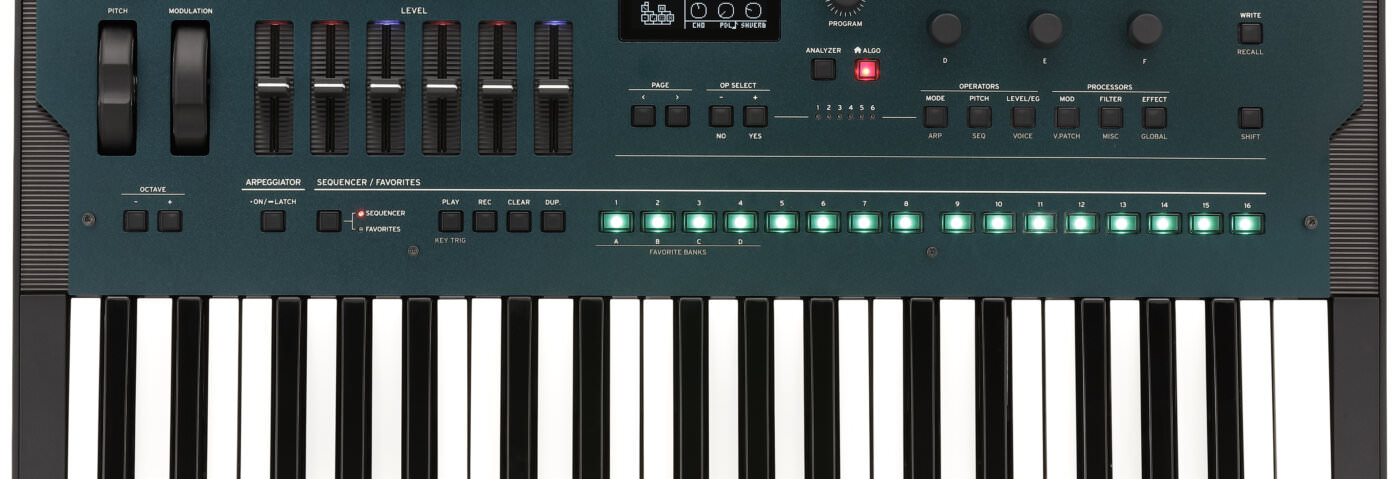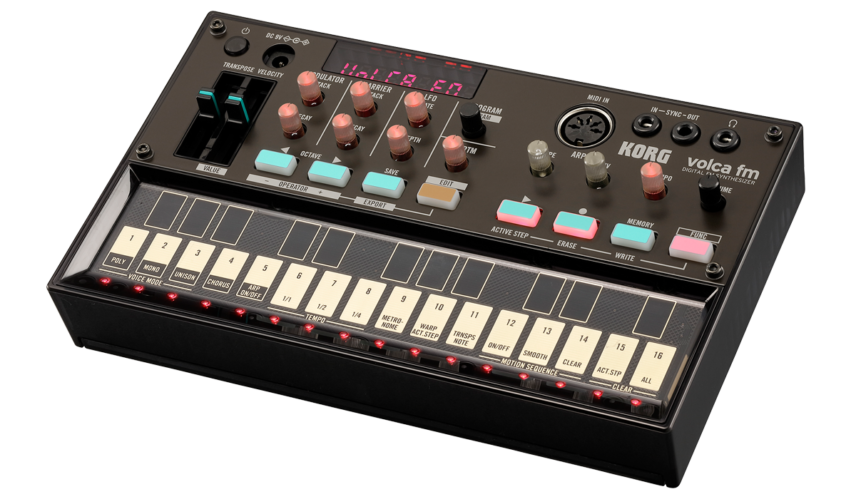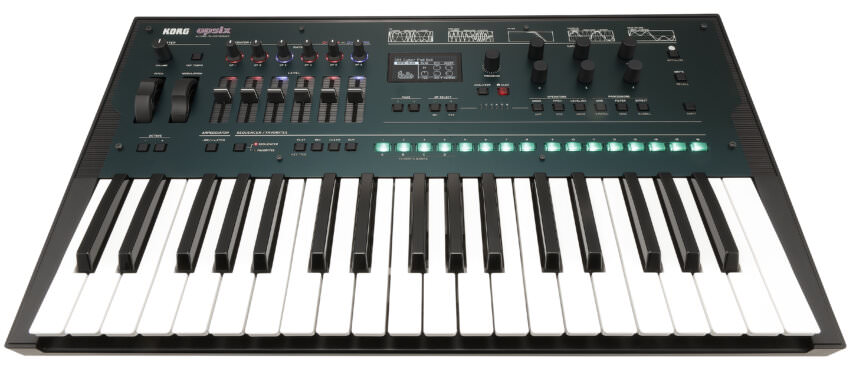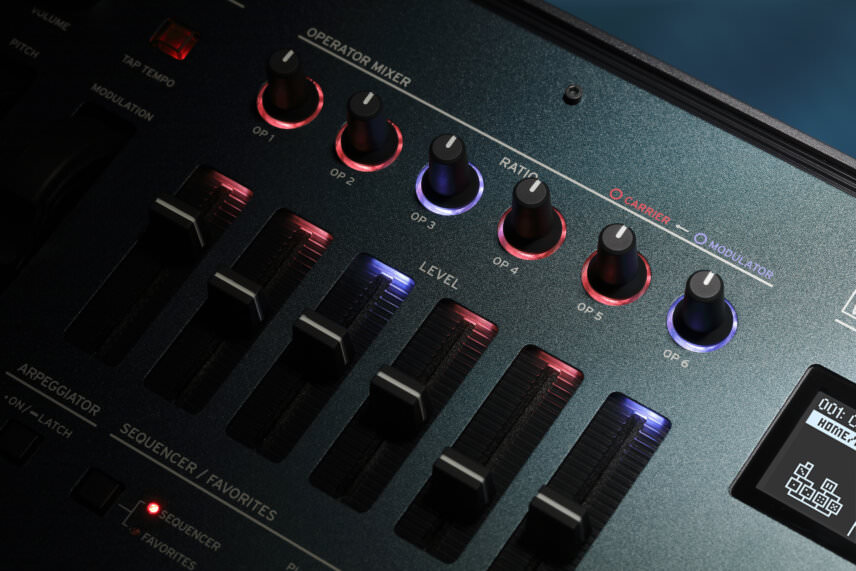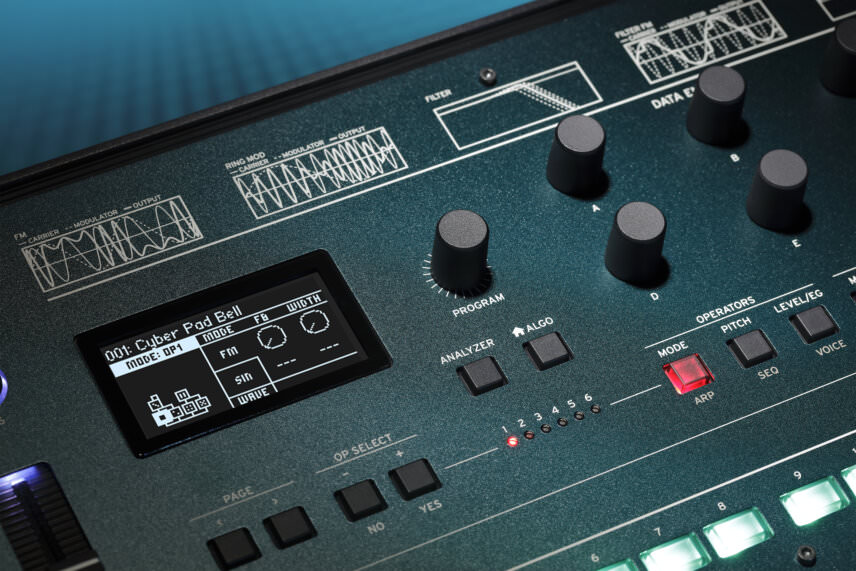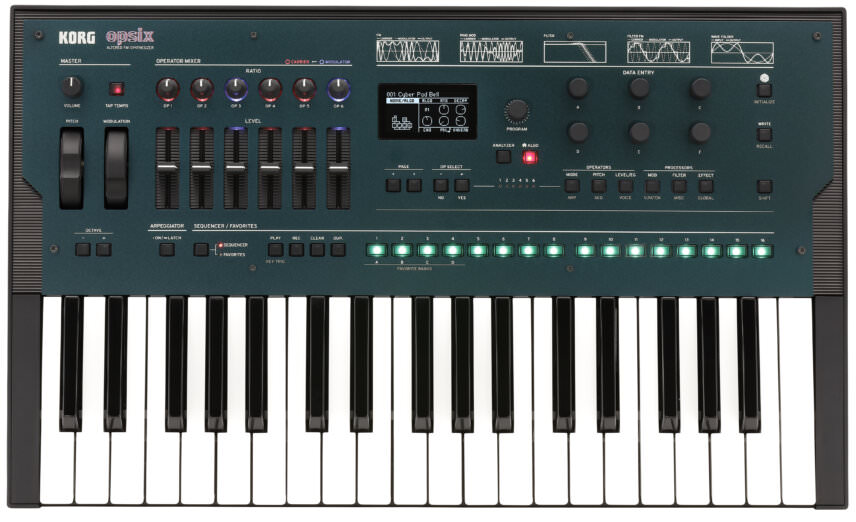Korg’s latest is a digital polysynth that takes classic six-operator FM modulation and enhances it with new FM parameters and operator modes. The 37-key Opsix also brings subtractive synthesis into the mix, with eleven filter types to choose from.
When it comes to portable, affordable and quality instruments Korg have had a grip on the market for some time now. The Opsix is their newest offering, building on a recent entry into FM synthesis. This started back in 2016 with the release of the Volca FM, which quickly became one of the most popular pieces of FM hardware on the market.
This success was due not only to its modest price of £129, but also to the fact that Korg had successfully replicated the six-operator voice structure of the godfather of FM—the Yamaha DX7. The Japanese company did this so accurately that users are able to seamlessly load any DX7 patch into the Volca FM.
Korg also managed to condense FM synthesis into a simpler and more portable format by means of new parameters including an FM algorithm control. Nonetheless, the main drawback to the Volca FM was that it was limited to three voices.
The new Opsix appears to be the solution, providing 32-voice polyphony and housing the fruits of Korg’s FM research in a Wavestate-esque unit.
The FM signal flow starts with six ratio knobs and mix faders, one each for every operator. This is then enhanced with five operator modes, all of which have a visual representation on the top right of the unit. These modes are FM, ring modulation, filter, filter FM and wavefolder.
An internal filter is a rarity in FM synths and adds a significant element of subtractive synthesis to the Opsix. There are eleven types of filter on offer including models of the MS-20 and Polysix filters.
The algorithm control makes it possible to choose between 40 presets of combinations of operator roles and connections, which users can also add to. This combined with the five operator modes and 21 waveforms to choose from look to make the sonic palette of the Opsix fairly comprehensive.
Other features—notably drawing influence from the Wavestate—include a polyphonic 16-step sequencer with an arpeggiator, a dice button to randomize a variety of parameters and an OLED display at the centre. The settings in the display are modified via the six data entry knobs.
There is also a built-in spectrum analyzer that shows the output levels for each frequency band and an oscilloscope that displays the output waveforms.
The Opsix will be available starting December 2020 at a price of £699/€799.
Head to Korg for more information.
